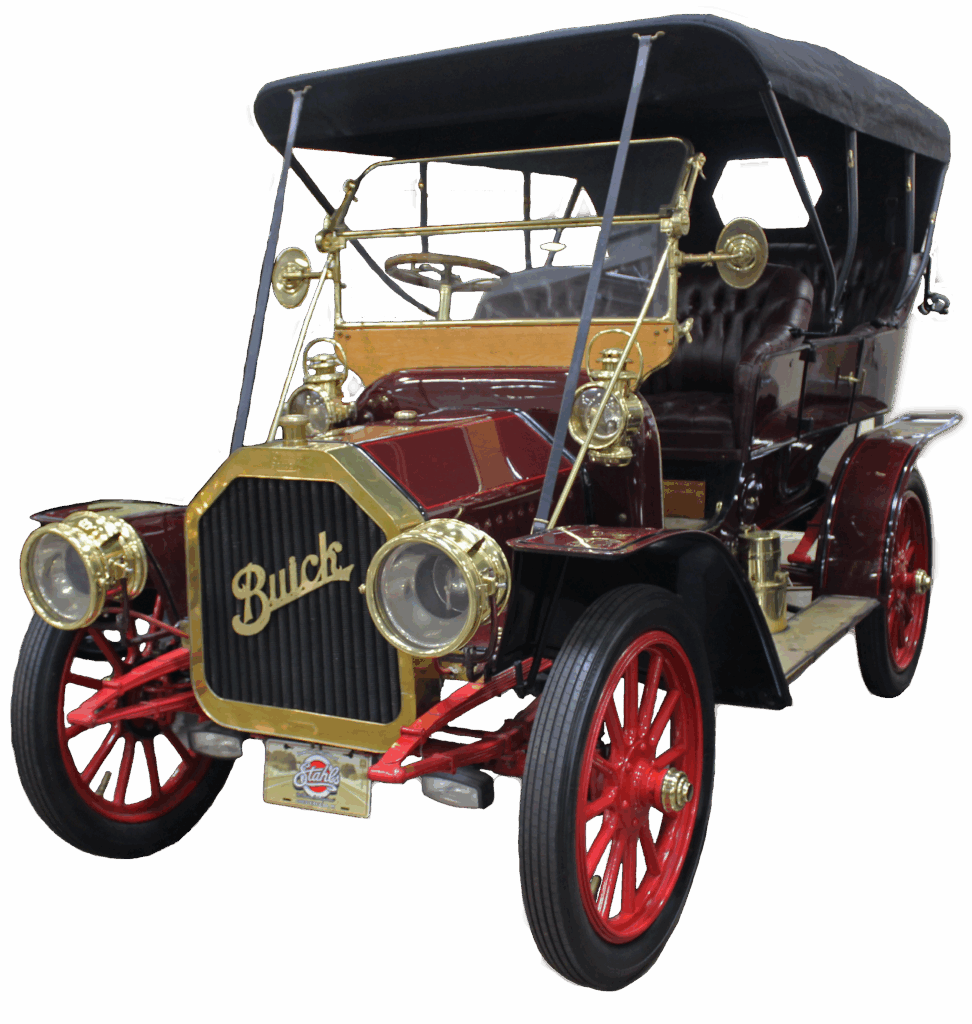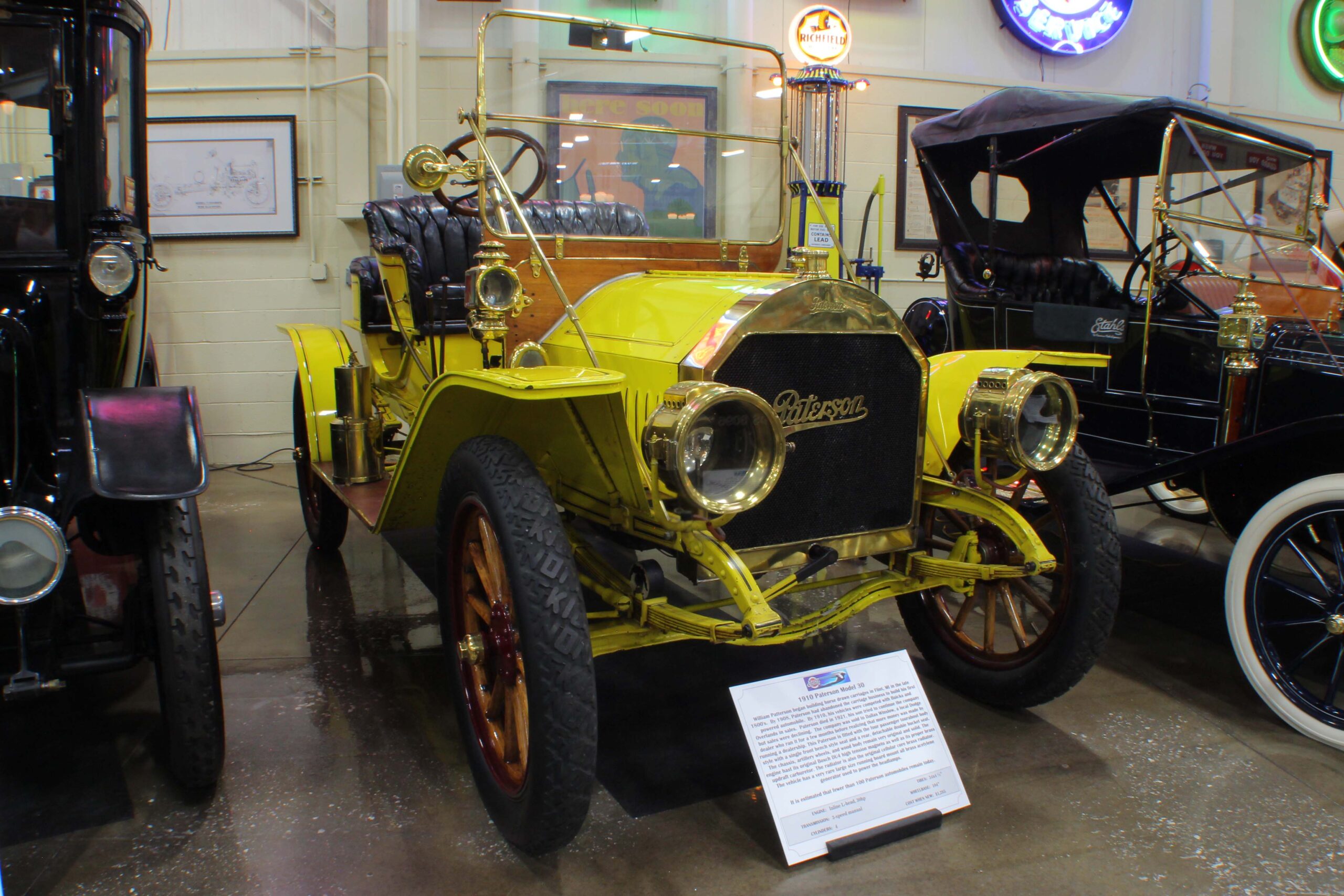At first glance, our 1910 Buick Model F Touring Car looks like many other brass-era automobiles. But a peek beneath the surface reveals something very different. Instead of finding the engine under the hood, Buick’s engineers tucked its two-cylinder, overhead-valve powerplant neatly under the body of the car, a surprising twist for anyone expecting the usual front-mounted engine.
That clever placement was paired with a planetary transmission and a rugged chain-driven rear axle, a setup that gave the Model F both reliability and strength for America’s rough early roads.
What really made this Buick special was its advanced overhead-valve design, a technology Buick had pioneered just a few years earlier. At a time when most automakers relied on simpler side-valve engines, Buick’s valve-in-head innovation delivered more power, smoother performance, and durability that won over drivers everywhere.
The result? A car that wasn’t just practical, it was ahead of its time, and it helped secure Buick’s place as the backbone of the brand-new General Motors Company.
Company History
In 1908, William C. Durant, a man with vision as grand as his ambition, founded the General Motors Company. Instead of starting from scratch, Durant united several already successful automakers under one banner, including Buick, Cadillac, and Oldsmobile. It was a daring move that set the stage for what would become the world’s largest automobile company.
Among these early marques, Buick quickly became the shining star.
By 1910, Buick wasn’t just building cars, it was building a reputation. The company offered a wide range of two- and four-cylinder vehicles, appealing to buyers who wanted both dependability and performance. What really set Buick apart, though, was the engineering under the hood: the revolutionary “Valve-In-Head” engine.
First introduced in late 1904, this overhead-valve design delivered more power and efficiency than the flathead engines used by most competitors. While others relied on side valves, Buick’s engineers placed the valves directly above the cylinders, allowing for better airflow and higher compression. The result? Engines that were stronger, smoother, and far more durable—a winning combination for the rough, unpaved roads of the early 20th century.
This wasn’t just a clever design, it was a breakthrough. The valve-in-head engine became Buick’s signature, a mechanical badge of honor that set the brand apart for decades. Advertisements of the era proudly proclaimed the superiority of Buick’s engineering, and customers agreed. By the time Durant was building GM into an empire, Buick had already become the company’s financial backbone, producing more cars than Cadillac and Oldsmobile combined.
These early successes gave Buick a special role in GM’s story. Without the popularity of its reliable, valve-in-head cars, Durant’s grand experiment in automotive consolidation might never have survived those uncertain early years. Instead, Buick carried the company forward, helping GM grow from a bold idea in 1908 into a household name.
Today, when you look at an early Buick, you’re not just seeing a car, you’re seeing the foundation of General Motors, a company that would go on to shape the automotive world for more than a century.



